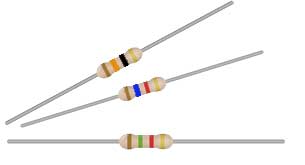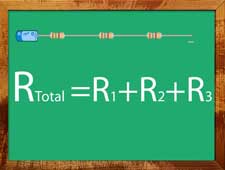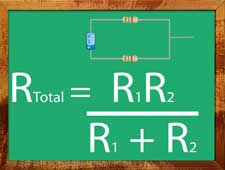Facts about Resistors
Posted by Admin / in Science Facts

Resistors are one of the building blocks of electronic circuits
Facts about Electrical Resistors
- A resistor is an electrical component thats main purpose is to resist electricity.
- Resistors limit the flow of current through a circuit.
- A major use of resistors in circuit design is: using standard power sources, limiting the current is important to protect electronic components that might burn out at higher currents
- The value of a resistor is measured in Ohm's, named after the German scientists Georg Simon Ohm.
- Ohm's Law states that for an ideal resistor, the resistance in a circuit is equal to the voltage divided by the current or I = V x R.
- The actual value of a resistor is easily measured using an ohmmeter or multimeter.
- Most standard resistors use a mixture of carbon and a binder to control the amount of electrical current resistance. This type of resistor is known as carbon composition resistor. A resistor with higher higher carbon and less binder has less resistance.
- The second type of widely used resistors is known as the metal film resistor. This type of resistor uses a thin metal film as an electricity conductor. The type of metal and additives to the metal change the resistance.
- Other types of electricity resistors, designed for circuits include photoresistors, carbon-film resistors, variable resistors (potentiometers), wire-round resistors, and photoresistors.
- A standard resistor has two leads (legs), known as an axial lead. Connection of a resistor in a circuit is possible in either direction. The resisting value is still the same in either direction.
- All electronic components resist electricity. Electrical engineers must take in account the resistance of all the components in a circuit. Manufactured electrical components typically have a data sheet that reports the resistance of the part. To experiment and test for electrical resistance on your own try the Electrical Resistor Experiment.


